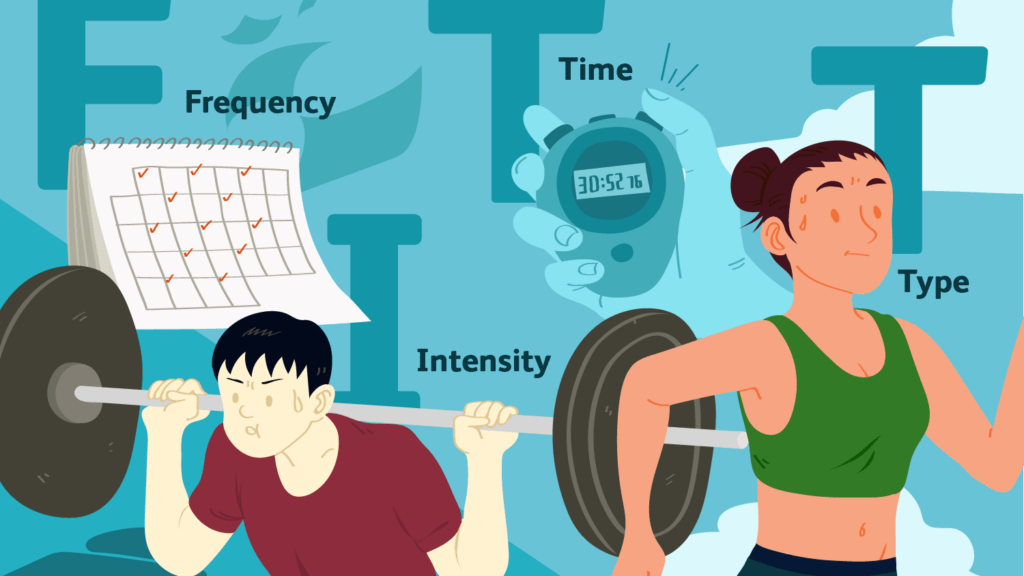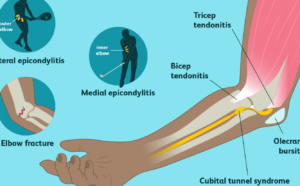Intensity.
One of the “sexy” words in the fitness industry, it’s even become a national business model as circuit training gyms that only do high-intensity training have become more and more common across the country.
Which makes sense. Intense training helps us feel like we’re doing something – like we’re actually working the fat off of our body.
We feel like the “results are coming” as soon as we finish the session.
But is that actually true?
Is intensity even important?
Or are you just sweating yourself out for no reason?
Let’s figure that out.
How you define intensity will vary depending on who you’re asking.
If you ask any person off the street or regular at the gym they might define intensity as a non-stop Bootcamp class or a wild workout that’ll have them puking afterward.
In the coaching world, however, we tend to define things a little differently.
When it comes to programming there are 3 main variables that are used to design a training program.
Intensity – The load used while lifting. A high-intensity activity would be lifting a heavy load with few reps.
Volume – This is the cumulative pounds lifted in a training session or throughout a training week.
Frequency – How often a particular muscle group or movement pattern is trained throughout the week.
So when you ask a well-versed coach what intensity means or about the intensity of a program they’ll most likely talk about how much the program is dedicated to the low rep, heavyweight training.
Neither definition is right or wrong though…
How Is Intensity Relevant To Your Goals?
We’ll go through how intensity is relevant for each goal but I have a bone to pick with the average Joe’s view on intensity.
That definition of intensity is the one that’s most often pictured when talking about training.
Which can lead people to fear fitness and feel like they’ll never do enough while causing others to become overworked and under recovered in their quest for results which only holds them back because they aren’t practicing proper intensity management.
So I want to clear the air here and discuss what topic is worth stressing about and what intensity you need, the differences, and what you shouldn’t worry about focusing on.
Cardio – Intensity Of Effort
Before I go any further you should understand something:
Intensity does not equal fat loss.
You don’t need to work yourself to the ground every single training session to see results. In fact, most of my clients do the opposite! They have some high-intensity sessions and more moderate intensity sessions throughout the week.
However, there are also people on the opposite end of the spectrum that don’t work hard enough in the gym and rarely venture outside of their comfort zone which limits their long term results.
So what is the exact balance that should be followed? How can you push intensity? What does too much and not enough look like?
The truth is – there is no exact answer.
It all depends on your individual recoverability, training experience, stress levels, current muscle mass, nutrition, and external lifestyle factors. The best way to approach this is to listen to your body while pushing past your comfort zone.
When it comes to burning and losing fat you NEED to build muscle. Period.
No matter the physique goal you have, you have to train to build muscle for the majority of your training throughout the week. My general recommendation to most people is to resistance train 3-4 times each week with the remaining days being left to HIIT or LISS.
I’ll talk about muscle building in the next section and finish off cardio right now.
In my experience, I’ve found that a mixture of HIIT cardio and LISS cardio seem to work best for fat loss. Generally aiming for 1-2 days of HIIT and another 1-2 days of LISS by hiking, walking, biking, or something similar.
The reason that we don’t want to do too much HIIT is because that will absolutely fry your central nervous system and make it difficult for your body to recover especially in addition to your resistance training program.
With that being said if you resistance train 3 times a week I would suggest 2 days of HIIT and 1 day of LISS. While if you train 4 times per week I would suggest the reverse, 1 day of HIIT and 2 days of LISS.
Once again though, the most important thing is to listen to your body! See what allows you to make progress while fully recovering because if you’re not recovering you’re only breaking down your body and your results will stall because of that.
So to conclude cardio, it’s pretty individual. Manage your intensities so that you can still recover properly throughout the week while also allowing yourself to focus on other recovery modalities like nutrition, sleep, and stress management.
This will produce more muscle, less fat, and improved recovery every time.
Building Muscle – Intensity of Effort and Load
When it comes to building muscle we actually want to focus on both effort and load in our training. Your training volume (as we mentioned earlier) is the most important variable that contributes to muscle growth.
Volume is just all of the work that you have done. That means reps, sets, weight lifted, and even the time under tension during an exercise. It’s any and all muscular stimulation that you experience while training.
I put this after cardio intentionally because if you’re not pushing your effort and your load then you’re not going to build serious muscle mass – period.
As I mentioned earlier, regardless of your goal – fat loss, muscle building, or performance – you NEED to focus on building muscle. It’ll contribute to each goal that you have.
In my experience, I’ve found that focusing on the intensity of effort tends to be more important here. What I mean by that is that by the time you finish the last rep of your set you should probably be breathing heavy and getting close to your muscular failure.
The best way to do that is to train every rep with as much control as you can, focusing on properly tensioning your muscles, focusing on your technique, and leaving about 1-2 reps in the tank before finishing off the session.
By following all of those principles that I described you’ll probably need to lift a relatively heavy load for the given reps. Which just automatically checks off the intensity requirement from the load at the same time!
By focusing on the one you’ll automatically be doing the other, we’re killing two birds with one stone here.
Now let’s breakdown how you should focus your intensities while trying to build muscle without pushing the intensity of effort in your lifting sessions 24/7.
When you’re lifting weight though, you should be MOVING WEIGHT. Unless it’s cardio or your deload week, you should be pushing your effort out of your comfort zone at least a little bit.
This doesn’t mean you should be doing a triple drop set to failure with every exercise like the “gym bros”.
Go hard, maintain form, focus on tension, and leave 1-2 reps in the tank.
How you divvy up the intensities though will depend on your goals.
If your main goal is to build muscle then ⅔ of your training should focus on that – aka higher rep, more volume, higher intensity of effort.
If your main goal is building strength, then ⅔ of your training should focus on that – aka lower rep, heavier weights, higher intensity of load.
If your main goal is fat loss then I would find a middle ground that you can stick to and enjoy more while maintaining good nutrition and recovery.
Strength – Intensity Of Load
With cardio, you need a blend of intensities at the end of the day but as long as you do the work you should be alright.
With building muscles, again you need a balance of intensities but with a little more focus on the intensity of effort vs intensity of load.
Building strength intensity of load is crucial and will ultimately decide how much strength you’ll actually build.
This is why most powerlifting programs focus on percentages for their lifts because they literally need to hit a specific weight target to progress to maximal strength.
Even if you don’t actually care how much weight you lift, I would focus some of your training on this.
When we build strength, we perform better.
When we perform better, we can train for hypertrophy or fat loss with a greater intensity of effort.
When we train with a greater intensity of effort, we can see better long term results.
Conclusion
This will ultimately depend on the individual but for 90% of individuals your intensity breakdown should look something like this
- 1-2 Days Per Week Lifting At High Intensity (Heavy, Lower Rep)
- 1-2 Days Per Week Lifting At A Lower Intensity (Light/Moderate Weight, Higher Rep)
- 1-2 Days Per Week Of High-Intensity Cardio (Hard Effort)
- 1-2 Days Per Week Of Low-Intensity Cardio (Active Recovery, Walk, Hike, Etc.)
As I mentioned above, these ratios might change depending on your highest priority goal – ⅔ of your training should reflect the goal you’re looking to achieve.
For the most part, this is how I program for 100% of my clients and why they get such great results.
You get a blend of every aspect of training regardless of your goal – you’ll need to train in these different zones for optimal success and give more attention to the zone that better fits your goal.
But you should never neglect any aspect of intensity, training, or recovery; it’s all necessary for the bigger picture.
Programming properly can be confusing and difficult to figure out. That’s why I’ve spent years studying and mastering the craft so that I can be the best coach I can be.
If you need help figuring out exactly how to program for your body, lifestyle, and specific goals – click here







